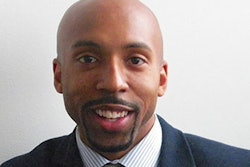At a time in academia when STEM is increasingly evolving into STEAM, colleges and universities with intensely driven, career-focused students are endeavoring to create space for arts education. Some students envision careers in art, music, or performance, while others see the value of the arts within the context of different career paths.
STEM (science, technology, engineering, and mathematics) is expanding into STEAM, with the addition of art.
 Eto OtitigbeAnthony Artist
Eto OtitigbeAnthony Artist
Artistic inspiration
While in the past the arts often have been on the margins at HBCUs, they have always existed, said Dr. Maisha S. Akbar, professor in the College of Arts and Sciences at Fort Valley State University, an HBCU institution in Georgia. Akbar, who teaches in the department of arts and communication, sees it as a vital means of communicating. There are also the technical and aesthetic sides of art.
“Students and faculty find a way to produce creatively, even if it’s not formal,” said Akbar. “The creative impulse and the tradition are born out of a need. When you’re forced to do more with less, that is innovation and creativity. … It’s also the critical cultural studies tradition.”
Akbar’s personal project is BlackPlayBook, which seeks to re-vision “black play” as cultural production that counters gender, race and class-based oppression. BlackPlayBook performs within a womanist/Black feminist tradition on a “play-ground” of Black performance, scholarship and activism, which she shares with her drama students. “We practice theater as scholarship, as performance and as activism,” Akbar said.
Georgia’s vibrant high school drama community brings students who are actors and theater practitioners from all over the state to Fort Valley. Akbar said some have been trained in the Black acting methods tradition, which originated in Atlanta. The university offers majors in visual performing arts and media studies, which includes programs in music, art and theater. These students intend to pursue careers in the arts, and some become arts educators. Others enter arts-connected professions, such as advertising, web design and computer software development.
“Creative thinking is the basis of the development of [many]of these industries now,” Akbar noted.
“The arts are a place where we learn empathy,” said Dr. Laura L. Tesman, professor and department chair for the theater department at Brooklyn College, which is part of the City University of New York (CUNY). “We learn to listen to other people, communicate, collaborate, engage with multiple perspectives and…invest in understanding the experiences outside of our own.”
Dr. Gregory A. McPherson has an extensive background as a musician, composer, arranger and teacher. He is currently director of choral activities (53 students in the choir and growing) and assistant professor of music at Delaware State University, an HBCU in Dover.
 Dr. Gregory A. McPhersonCourtesy of Dr. Gregory A. McPherson
Dr. Gregory A. McPhersonCourtesy of Dr. Gregory A. McPherson
“Of course, we do a lot of singing, different kinds of things,” he added. This includes adaptations of various popular music. “When we do that kind of music for whatever reason, even if we have a bias about certain kinds of sounds and subject matter, it begins to compel a sense of wholeness. It informs us that if we do not have the arts, there’s a hole in our soul, which every day I’m trying to plug up when it can be filled up with some really wonderful things centered around the arts.”
Curriculum
“Our students have diverse personal, community-based, cultural and political interests that we welcome by offering a broad range of courses in art history, anime, digital art, drawing, painting, photography, printmaking and sculpture,” said Otitigbe of Brooklyn College. “Even within those disciplines we offer unique classes like design thinking, creative coding, anime and comic books, public art, collaborative strategies and exploration of new materials.”
Many students attend Brooklyn College from CUNY’s community colleges after advisors see their interest in theater and desire to pursue careers in that area. Each semester, Tesman teaches a class for incoming students to get them acclimated. This spring semester, she was pleasantly surprised to hear students say they were excited to be in this community of caring and motivated theater makers.
“In the courses we offer, we work to introduce students to the tools and the practices that will help them to identify and develop their own practice and to find their unique voice as an artist and as a human being,” said Tesman. “We invite them to come as their whole selves…and utilize those parts as they feel they want to and can to tell the kinds of stories that they think need to be told or to find the plays that do that already.”
Students in one of Tesman’s courses create original 10-minute plays in small groups, serving as the dramaturges (researchers), writers, actors, directors, designers and technicians. “It democratizes the process of theater-making,” she said. “It empowers students to tell the stories that they want to tell.”
At Fort Valley State, Akbar is the faculty advisor and producing director of the Joseph Adkins Players, the official student drama organization on campus, and she has produced an anti-lynching play series since 2012. “In doing so, students have been exposed to this little-known genre of American drama,” she said. “Now they have a context for the movements that followed, including the civil rights movement, the Black Lives Matter movement, the Black arts movement.”
These mostly one-act plays are staged once a year. Other plays are staged as well, although the pandemic brought disruption. “Because we’ve been under-resourced and because of the effects of the pandemic, we have focused on these activist-based plays recently,” said Akbar. “We staged a couple of contemporary anti-police brutality plays, which are extensions of the anti-lynching play tradition.”
Akbar said the students have recently written a screenplay for a short film, which they’re in the process of filming. “They’ve been inspired by some of the original playwrighting,” she said.
McPherson, who has experience teaching how to hear and interpret music, teaches ear training at Delaware State. This involves being able to decipher and disseminate the mechanics of what aural tone is. He recently started a program in film scoring and there is a companion studio orchestra.
“Doing that here has been a gamechanger,” McPherson said. “I have 11 kids in film scoring, and it’s a voluntary group. I wanted to see if there was any real interest in it and to see if they would come together without getting credit for it, to see if they have a passion. … We are going to make it for-credit.”
Fueling creativity
 Dr. Laura L. Tesman stands in front of the Leonard & Claire Tow Center for the Performing Arts at Brooklyn College.David Rozenblyum
Dr. Laura L. Tesman stands in front of the Leonard & Claire Tow Center for the Performing Arts at Brooklyn College.David Rozenblyum
Brooklyn College offers a bachelor’s degree in theater as well as bachelor’s and master of fine arts (MFA) degrees in acting and technical production and MFAs in directing and performing arts management. There are also three minors: acting, production and a general minor in theater. Tesman said there are a number of students who take one of the minors while pursuing a major in a decidedly different discipline.
“A large number of students take our Intro to Acting class,” said Tesman. “For many of them, it’s the first time they’ve had to get up in front of people and perform. They work collaboratively in ways that they don’t get to in many of their other classes, so they are able to take those skills back to their business presentation or the group project they have to do for a science class.”
Akbar said her courses get students from various majors at Fort Valley. In addition to visual and performing arts majors, she’s gotten cohorts of students from animal science, the vet tech program, computer science and biology. The drama club is open to all students on campus.
Some of McPherson’s students envision careers in the music industry while others want to use music as a tool for impacting society. Many of the students in Delaware State’s spoken word group have dual majors in psychology or sociology and music.
“Many of them while pursuing careers as professional artists want to impact and inspire change and compel thought,” said McPherson, noting the range of arts programs and collaborations throughout the university, such as the business school offering integrated MFA/MBA for arts management. “We’re on that hyper speed road to integrating the arts into everything we do.”















